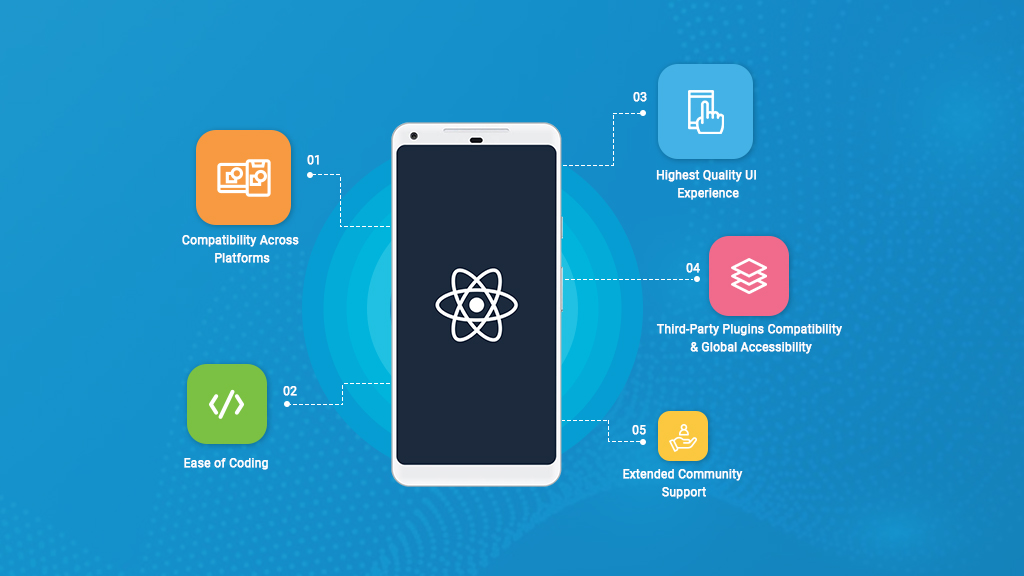Introduction to Salesforce Marketing Cloud Growth Edition
In today’s digital age, the ability to connect with customers on a personal level and through various channels is not just beneficial; it is essential for growth. Salesforce Marketing Cloud Growth Edition offers a powerful suite of tools designed to help businesses achieve this connection, making it easier than ever to engage with customers in meaningful ways. This comprehensive guide aims to unlock the potential within Salesforce Marketing Cloud Growth Edition, offering insights into its key features, capabilities, and the myriad benefits it brings to businesses. Our journey begins with an exploration of what Salesforce Marketing Cloud Growth Edition is and how it stands as a beacon for businesses looking to enhance their marketing strategies.
The Salesforce Marketing Cloud Growth Edition is tailored for businesses aiming to elevate their marketing efforts. It’s a more accessible version of the Salesforce Marketing Cloud, providing a robust platform for businesses to create, manage, and analyze their marketing campaigns across multiple channels. This edition is designed with growth in mind, offering scalable solutions that adapt as a business expands. The beauty of this platform lies in its simplicity and power, making sophisticated marketing strategies accessible to businesses of all sizes.
As we delve deeper into the Salesforce Marketing Cloud Growth Edition, it’s essential to understand that this tool is more than just a software solution; it’s a growth enabler. By leveraging the capabilities of Salesforce Marketing Cloud, businesses can not only reach their audience more effectively but also gain valuable insights into their preferences and behaviors. This introductory section has set the stage for a deeper dive into the features, benefits, and practical applications of Salesforce Marketing Cloud Growth Edition, laying the foundation for successful marketing strategies.
Understanding the key features and capabilities of Salesforce Marketing Cloud Growth Edition
Salesforce Marketing Cloud Growth Edition is packed with features and capabilities designed to streamline marketing efforts and enhance customer engagement. At its core, the platform offers email marketing, mobile messaging, social media management, and digital advertising tools, all integrated into a user-friendly interface. This integration allows for a seamless marketing experience, enabling businesses to create cohesive campaigns that resonate with their audience.
One of the standout features of Salesforce Marketing Cloud Growth Edition is its advanced segmentation and targeting capabilities. Businesses can easily segment their audience based on various criteria, such as demographics, behavior, and purchase history, ensuring that the right message reaches the right person at the right time. This level of personalization is crucial in today’s marketing landscape, where consumers expect brands to understand their needs and preferences.
Another significant capability of Salesforce Marketing Cloud Growth Edition is its comprehensive analytics and reporting tools. These tools provide deep insights into campaign performance, allowing businesses to measure the effectiveness of their marketing efforts accurately. By understanding what works and what doesn’t, businesses can continuously refine their strategies, optimizing their campaigns for maximum impact and ROI.
Benefits of using Salesforce Marketing Cloud Growth Edition for your business
The adoption of Salesforce Marketing Cloud Growth Edition brings numerous benefits to businesses, helping them to not only reach their target audience more effectively but also to forge stronger relationships with customers. One of the key benefits is the ability to deliver personalized experiences at scale. With the advanced targeting and segmentation capabilities of Salesforce Marketing Cloud, businesses can tailor their messaging to meet the specific needs and preferences of their audience, enhancing customer satisfaction and loyalty.
Another significant advantage is the improvement in marketing efficiency and productivity. The integrated nature of Salesforce Marketing Cloud Growth Edition allows businesses to manage all their marketing activities from a single platform, eliminating the need for multiple tools and systems. This consolidation not only saves time but also reduces the complexity of marketing operations, enabling teams to focus on strategy and creativity rather than administrative tasks.
Furthermore, Salesforce Marketing Cloud Growth Edition empowers businesses with data-driven insights, enabling them to make informed decisions about their marketing strategies. The platform’s robust analytics and reporting tools provide a comprehensive view of campaign performance, allowing businesses to identify trends, measure ROI, and adjust their tactics accordingly. This data-driven approach ensures that marketing efforts are always aligned with business objectives, driving growth and success.
How to set up and configure Salesforce Marketing Cloud Growth Edition
Setting up and configuring Salesforce Marketing Cloud Growth Edition is a straightforward process, designed to get businesses up and running with minimal effort. The first step is to create an account and configure the basic settings, including user roles, permissions, and security settings, to ensure that the platform is tailored to the specific needs of the business. This foundational setup is critical for maintaining data integrity and controlling access to sensitive information.
Next, businesses need to integrate Salesforce Marketing Cloud Growth Edition with their existing systems and data sources. This integration is facilitated by a range of connectors and APIs that enable seamless data transfer between Salesforce Marketing Cloud and other business applications, such as CRM systems, e-commerce platforms, and social media channels. By integrating these systems, businesses can leverage their existing data to enrich their marketing campaigns, ensuring a consistent and cohesive customer experience across all touchpoints.
Once the basic setup and integration are complete, businesses can begin to configure the specific features and capabilities of Salesforce Marketing Cloud Growth Edition to meet their marketing objectives. This includes setting up email templates, creating audience segments, defining automation rules, and configuring analytics dashboards. With these elements in place, businesses are well-equipped to launch effective marketing campaigns that drive engagement and growth.
Best practices for optimizing your marketing campaigns using Salesforce Marketing Cloud Growth Edition
To maximize the potential of Salesforce Marketing Cloud Growth Edition, businesses should adhere to a set of best practices that ensure their marketing campaigns are optimized for success. The first of these practices is to adopt a customer-centric approach, focusing on delivering personalized and relevant content that resonates with the audience. This involves using the advanced segmentation and targeting capabilities of Salesforce Marketing Cloud to tailor messaging and offers based on individual customer profiles.
Another best practice is to leverage the power of automation to streamline marketing processes and enhance efficiency. Salesforce Marketing Cloud Growth Edition offers a range of automation tools that enable businesses to trigger personalized communications based on specific customer behaviors or milestones. This automation not only saves time but also ensures that customers receive timely and relevant messages, improving engagement and conversion rates.
Moreover, businesses should make data-driven decisions by utilizing the comprehensive analytics and reporting features of Salesforce Marketing Cloud Growth Edition. By continuously monitoring campaign performance and analyzing customer data, businesses can gain valuable insights that inform their marketing strategies. This data-driven approach allows for continuous optimization of campaigns, ensuring that marketing efforts are always aligned with business goals and customer expectations.
Leveraging data and analytics in Salesforce Marketing Cloud Growth Edition to drive growth
The ability to leverage data and analytics is one of the most powerful features of Salesforce Marketing Cloud Growth Edition, enabling businesses to drive growth through informed decision-making. By collecting and analyzing customer data, businesses can gain a deep understanding of their audience, uncovering patterns and preferences that inform targeted marketing strategies. This data-driven approach allows for the creation of highly personalized and effective campaigns that resonate with customers on an individual level.
Furthermore, the analytics and reporting tools provided by Salesforce Marketing Cloud Growth Edition offer real-time insights into campaign performance, allowing businesses to measure the impact of their marketing efforts accurately. These insights enable businesses to identify what’s working and what’s not, facilitating rapid adjustments to optimize campaign effectiveness. By continuously refining their strategies based on data and analytics, businesses can improve their ROI and drive sustainable growth.
Additionally, Salesforce Marketing Cloud Growth Edition facilitates predictive analytics, enabling businesses to anticipate customer needs and behaviors. This forward-looking approach allows for the proactive creation of marketing strategies that align with future trends and customer expectations, ensuring that businesses remain ahead of the curve. By leveraging data and analytics, businesses can not only react to the market but also shape it, driving growth through innovation and customer engagement.
Integrating Salesforce Marketing Cloud Growth Edition with other Salesforce products
The integration of Salesforce Marketing Cloud Growth Edition with other Salesforce products amplifies its capabilities, creating a unified and powerful platform for managing customer relationships and marketing activities. By connecting Salesforce Marketing Cloud with Salesforce Sales Cloud, for example, businesses can achieve a seamless flow of information between marketing and sales teams, enhancing collaboration and alignment on shared objectives. This integration enables businesses to leverage customer insights across the entire customer journey, from initial engagement through to conversion and retention.
Similarly, integrating Salesforce Marketing Cloud Growth Edition with Salesforce Service Cloud enhances the customer experience by providing consistent and personalized service across all touchpoints. This integration ensures that customer interactions are informed by a comprehensive view of the customer’s history and preferences, enabling service teams to deliver tailored support that reinforces the brand’s value proposition.
The integration capabilities of Salesforce Marketing Cloud Growth Edition extend to other Salesforce products as well, including Salesforce Commerce Cloud and Salesforce Community Cloud, offering businesses the opportunity to create a cohesive and integrated customer experience. By leveraging these integrations, businesses can break down silos between departments, ensuring a unified approach to customer engagement that drives loyalty and growth.
Training and resources for mastering Salesforce Marketing Cloud Growth Edition
To fully leverage the capabilities of Salesforce Marketing Cloud Growth Edition, businesses must invest in training and resources that enable their teams to master the platform. Salesforce offers a range of training options, including online courses, webinars, and certification programs, designed to cater to different learning styles and proficiency levels. These training resources cover various aspects of Salesforce Marketing Cloud Growth Edition, from basic setup and configuration to advanced features and integration techniques.
In addition to Salesforce’s official training programs, numerous third-party resources are available, including user forums, blogs, and industry conferences. These resources provide valuable insights and best practices from the Salesforce community, offering businesses the opportunity to learn from the experiences of others. By engaging with these resources, businesses can stay up-to-date with the latest trends and developments in Salesforce Marketing Cloud Growth Edition, ensuring their marketing strategies remain effective and competitive.
Furthermore, Salesforce Marketing Cloud Growth Edition has comprehensive support services, including technical support, consulting services, and a knowledge base. These support services provide businesses with access to expert advice and guidance, helping them to overcome challenges and maximize the value of Salesforce Marketing Cloud Growth Edition. By taking advantage of training, resources, and support services, businesses can develop the skills and knowledge needed to excel in the digital marketing landscape.
Conclusion and next steps for maximizing your business growth with Salesforce Marketing Cloud Growth Edition
The journey through Salesforce Marketing Cloud Growth Edition has revealed a powerful platform capable of transforming marketing strategies and driving business growth. By understanding its key features and capabilities, leveraging data and analytics, and integrating with other Salesforce products, businesses can unlock the full potential of Salesforce Marketing Cloud Growth Edition. The benefits of using this platform are clear, from delivering personalized customer experiences to enhancing marketing efficiency and making data-driven decisions.
As businesses look to the future, the next steps involve continuously optimizing their use of Salesforce Marketing Cloud Growth Edition, staying abreast of new features and updates, and investing in ongoing training and development. The case studies and success stories highlighted in this guide serve as inspiration, demonstrating the transformative impact that Salesforce Marketing Cloud Growth Edition can have on businesses across various industries.
In conclusion, Salesforce Marketing Cloud Growth Edition offers a pathway to growth and success in the digital age. By embracing this platform and leveraging its capabilities to the fullest, businesses can achieve their marketing objectives, forge stronger connections with customers, and drive sustainable growth. The future is bright for those who unlock the potential of Salesforce Marketing Cloud Growth Edition, and the journey toward marketing excellence is just beginning.




